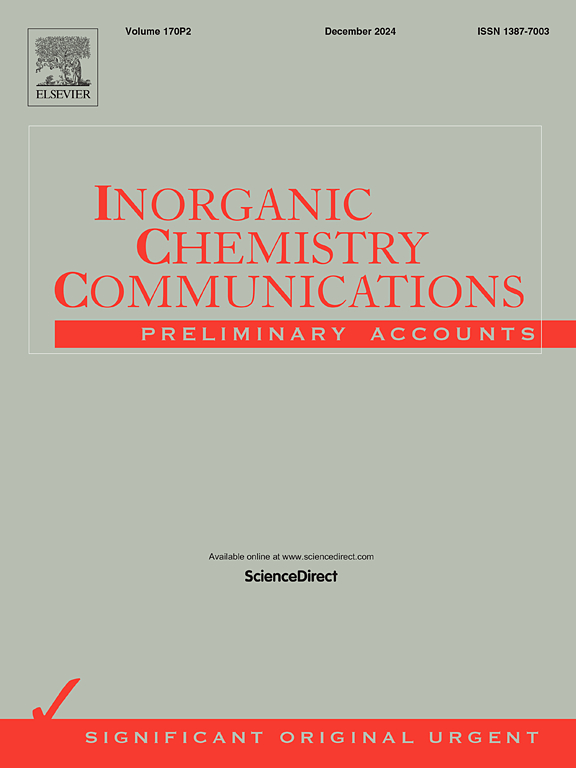Effect of bioactive glass addition on the tribological and antibacterial response of zirconia-based biocomposites
IF 4.4
3区 化学
Q1 CHEMISTRY, INORGANIC & NUCLEAR
引用次数: 0
Abstract
Yttrium-stabilized zirconia (YSZ) is widely employed in restorative dentistry owing to its exceptional aesthetic outcomes, chemical stability, and excellent biocompatibility. However, these materials exhibit restricted capabilities in terms of tribological and antibacterial performance for dental purposes. A newly modified composite YSZ–xBAG (x = 0–25 wt%) has been prepared. The present investigation examines the effect of bioactive glass (BAG) addition on the tribological and antibacterial response of the YSZ-BAG composite. The tribological test is performed on a bio-tribometer under simulated body fluid (SBF) at 37°C. The surface morphology of worn surfaces is studied by HR-SEM/EDS. Tribological results indicate that the wear rate and coefficient of friction (COF) first decrease up to 10 wt% of BAG addition and then increase up to 25 wt% of BAG content. YSZ with 10 wt% of BAG displays superior antifriction and wear resistance properties, with an average COF of 0.17 and a wear rate of 0.63 × 10–6 mm3 per mm of sliding distance. The optical profilometer is used for surface topography analysis of worn surfaces. Line and surface roughness are almost enhanced by enhancing the BAG content into YSZ ceramic. The surface morphology of worn surfaces of composite samples shows that each sample undergoes pull-out during the rubbing process. Antibacterial tests on composite samples are conducted with Gram-positive (S. aureus; MTCC 435) and Gram-negative (E. coli; MTCC 443) bacteria. The antibacterial result demonstrates that the presence of BAG considerably reduces the bacterial cells’ viability on the composite samples. The live/dead ratio for E. coli of all samples (0, 5, 10, 15, and 25 % of BG) are 13.83, 4.93, 3.31, 2.28, and 1.80, respectively, and for S. aureus are 15.33, 5.53, 3.63, 2.61, and 2.12, respectively. In conclusion, BAG added YSZ ceramics may apply to dental implant material.

生物活性玻璃添加对氧化锆基生物复合材料摩擦学和抗菌性能的影响
钇稳定氧化锆(YSZ)因其优异的美学效果、化学稳定性和良好的生物相容性而广泛应用于牙科修复。然而,这些材料在牙科用途的摩擦学和抗菌性能方面表现出有限的能力。制备了一种新型改性复合材料YSZ-xBAG (x = 0-25 wt%)。本研究考察了生物活性玻璃(BAG)的加入对YSZ-BAG复合材料摩擦学和抗菌性能的影响。在37°C的模拟体液(SBF)下,在生物摩擦计上进行摩擦学测试。采用HR-SEM/EDS对磨损表面形貌进行了研究。摩擦学结果表明,当BAG添加量增加时,磨损率和摩擦系数(COF)先降低10 wt%,然后增加25 wt%。含10 wt% BAG的YSZ具有优异的抗摩擦和耐磨性,平均COF为0.17,每mm滑动距离的磨损率为0.63 × 10 - 6 mm3。光学轮廓仪用于磨损表面的表面形貌分析。在YSZ陶瓷中增加BAG的含量,几乎可以提高线条和表面粗糙度。复合材料试样的磨损表面形貌表明,在摩擦过程中,每个试样都发生了拉出。用革兰氏阳性金黄色葡萄球菌对复合样品进行抗菌试验;MTCC 435)和革兰氏阴性(大肠杆菌;MTCC 443)细菌。抗菌结果表明,BAG的存在显著降低了复合样品上细菌细胞的活力。大肠杆菌(BG含量为0、5、10、15、25%)的活死比分别为13.83、4.93、3.31、2.28、1.80,金黄色葡萄球菌的活死比分别为15.33、5.53、3.63、2.61、2.12。综上所述,BAG添加的YSZ陶瓷可作为种植体材料。
本文章由计算机程序翻译,如有差异,请以英文原文为准。
求助全文
约1分钟内获得全文
求助全文
来源期刊

Inorganic Chemistry Communications
化学-无机化学与核化学
CiteScore
5.50
自引率
7.90%
发文量
1013
审稿时长
53 days
期刊介绍:
Launched in January 1998, Inorganic Chemistry Communications is an international journal dedicated to the rapid publication of short communications in the major areas of inorganic, organometallic and supramolecular chemistry. Topics include synthetic and reaction chemistry, kinetics and mechanisms of reactions, bioinorganic chemistry, photochemistry and the use of metal and organometallic compounds in stoichiometric and catalytic synthesis or organic compounds.
 求助内容:
求助内容: 应助结果提醒方式:
应助结果提醒方式:


